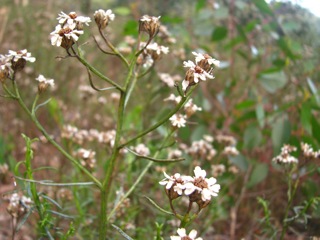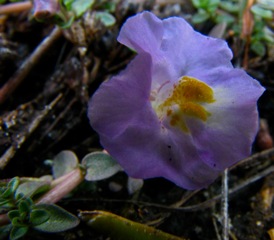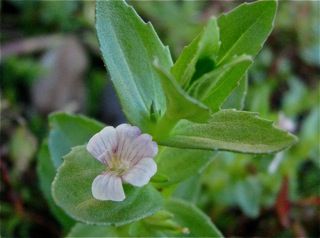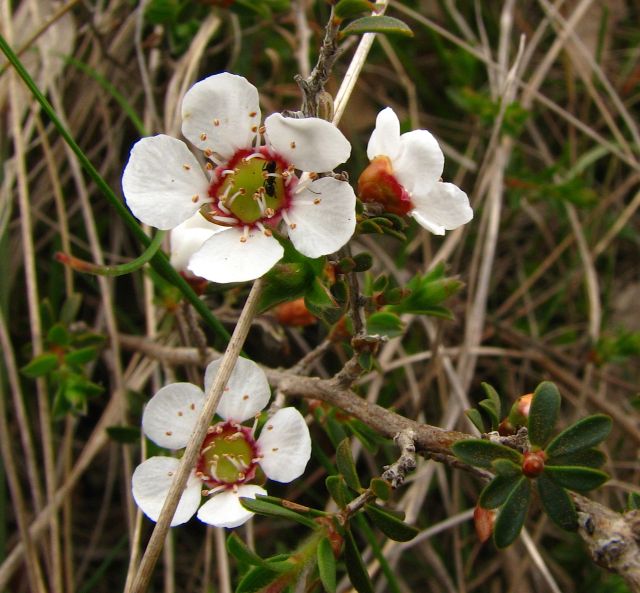In this dry time it can seem as if there is nothing special to see, but if you look you may find two of our most delightful plants in flower.
In some of the driest spots on coastal cliffs and heathland, look out for upright bushes with clusters of the stunning, shining, white, papery, daisy-like flowers of Ixodia Ixodia achillaeoides subsp. alata.

Ixodia
The rich-green, sticky narrow leaves tend to curl downwards. A good place to find it in Anglesea is the appropriately named Ixodia Track.
The receding waters in our waterways are revealing the quite-gorgeous Creeping Monkey-flower Mimulus repens.

Creeping Monkey-flower
This prostrate plant has delicate, mauve flowers which look a bit like butterflies among small, crowded, stalkless leaves. At Minya, on the February bird walk, we saw a fully-coloured male Fairy Wren in amongst the Monkey-flowers, and the combination of colours was just beautiful.
Our swampy areas near watercourses and inlets have other delights. At the Allen Noble Sanctuary Spotted Knotweed Persicaria decipiens is growing profusely along the edges, looking like a weed.

Spotted Knotweed
It is a low- growing, spreading plant with long green leaves, often with a dark blotch. The small pink flowers grow in long, slender, often paired spikes, at the ends of the stalks. This plant is mixed in with large areas of the more upright, shin-height, Austral Brooklime Gratiola peruviana.

Austral Brooklime
The thick, fleshy stem has paired, succulent, toothed, ovate leaves, with a cluster of smaller leaf-life structures in the axils. The single, five-petalled, white/pink stalkless flowers have notched petals and grow in axils at the end of the stalks.
If you look closely when walking in the heathlands, you may see what appears to be groups of tiny white pearls intermingled in the foliage of a range of plants. A close look will reveal that they are actually clusters of tiny white flowers which belong to one of the much maligned parasitic Dodder-laurels, and is called Slender Dodder-laurel Cassytha glabella forma dispar. However this plant, with its very fine stems, does not seem to unduly harm the host plant.

Slender Dodder-laurel
If all else fails have a look out for seedpods, especially on the wattles, which are often twisted into interesting contorted shapes. Silky Teatree Leptosperma myrsinoides with its slightly splayed (oblanceolate) leaves, has green/brown pods with the distinctive five chambers, and a silky feel.

Silky Teatree
Good luck and don’t forget to carry your Flowers of Anglesea and Aireys Inlet.
Ellinor Campbell